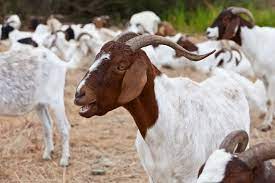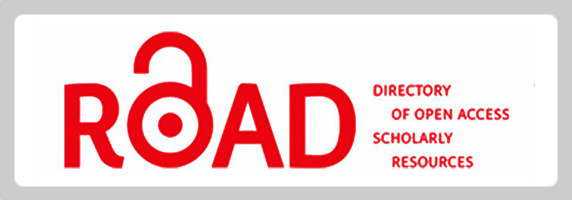Traditional Husbandry Practices and Selection Criteria of Goats in Selected Districts of Sidama Zone, Southern Ethiopia
Abstract
Before implementing any development plan, it is critical to understand traditional goat management practices, which allow breeders to create long-term genetic improvement while preserving indigenous goat production. This study aimed to describe the goat husbandry system in two districts of Sidama zone of southern Ethiopia using two production systems. A semi-structured questionnaire was employed to gather information regarding the management activities, the purpose of keeping goats, and farmers’ selection criteria for breeding animals. A total of 240 households were interviewed to collect relevant information for the study. Data collected were statistically analyzed and summarized into descriptive statistics. Indexes were calculated to clarify rankings by using indexes formula. The number goat population was more in Loka Abaya than Aroresa. The primary purpose of keeping goats in the study area is mainly for their milk, meat and income generation. Broad shoulders, compact frame, and short and thick necks of the bucks were considered the most important characteristics for selection. Communal grazing and crop aftermath were the most common feed sources reported by farmers in the study area. River was the major water source for goats in the study districts. The major factors limiting the productivity of goats are feed shortage, diseases, and labour shortage. The management and husbandry practices are nearly equivalent to the rest of the country with the same agroecology. Planning and implementing goat development and extension services on management, improvement, disease control, and suitable forage production strategies helps farmers in increasing goat production and therefore improving their livelihood.
Downloads
References
Abebe, Y., Melaku, S., Tegegne, A., & Tegegne, F. (2013). Sheep breeds, traditional breeding and flock structure in Burie district, North Western Ethiopia.
Abegaz, S. (2014). Design of community based breeding programs for two indigenous goat breeds of Ethiopia. University of Natural Resources and Life Sciences, Vienna.
Abraham, H., Gizaw, S., & Urge, M. (2017). Begait goat production systems and breeding practices in Western Tigray, North Ethiopia. Open Journal of Animal Sciences, 7(02), 198.
Alefe, T. (2014). Phenotypic characterization of indigenous goat types and their production system in shabelle zone, south eastern Ethiopia. An MSc Thesis, Haramaya University, Haramaya, Ethiopia. 112pp.
Alemu, A. (2015). On-farm phenotypic characterization and performance evaluation of abergelle and central highland goat breeds as an input for designing community-based breeding program. Haramaya University.
Animut, G., & Goetsch, A. L. (2008). Co-grazing of sheep and goats: benefits and constraints. Small Ruminant Research, 77(2–3), 127–145.
Asefa, B., & Kebede, K. (2013). On Farm Phenotypic Characterization of Indigenous Goat Types and Their Production System in Bale Zone Of Oromia Region Ethiopia. Haramaya University.
Assefa, E. (2007). Assessment on production system and marketing of goats at Dale district (Sidama Zone). Unpublished M. Sc Thesis. University of Hawassa, Awassa, Ethiopia.
Aune, J. B., Bussa, M. T., Asfaw, F. G., & Ayele, A. A. (2001). The ox ploughing system in Ethiopia: can it be sustained? Outlook on Agriculture, 30(4), 275–280.
Ayalew, T., Duguma, B., & Tolemariam, T. (2013). Smallholder cattle production systems in three Districts of Ilu Aba Bora zone of Oromia Regional State, south western Ethiopia. American-Eurasian Journal of Scientific Research, 8(1), 38–46.
Banerjee, A. K., Animut, G., & Ermias, E. (2000). Selection and breeding strategies for increased productivity of goats in Ethiopia. The Opportunities and Challenges of Enhancing Goat Production in East Africa, 70–79.
Banerjee, S., Beyan, M., & Bekele, H. (2014). Some traditional livestock selection criteria as practiced by several indigenous communities of Southern Ethiopia. Animal Genetic Resources/Ressources Génétiques Animales/Recursos Genéticos Animales, 54, 153–162. https://doi.org/10.1017/s2078633614000083
Bekele, D., & Kebede, K. (2016). On-Farm Phenotypic Characterization of Indigenous Cattle in Bako Tibe and Gobu Sayo Districts of Oromia Region, Ethiopia. J. Biol., Agri. and Healthcare, 6(19), 94–103.
Belete, S. (2009). Production and marketing systems of small ruminants in Goma district of Jimma zone, western Ethiopia. Hawassa University, Ethiopia, 34–105.
Bett, R. C., Kosgey, I. S., Kahi, A. K., & Peters, K. J. (2011). Definition of breeding objectives and optimum crossbreeding levels for goats in the smallholder production systems. Small Ruminant Research, 96(1), 16–24. https://doi.org/10.1016/j.smallrumres.2010.11.008
CSA. (2020). Ethiopia (Federal Democratic Republic of Ethiopia). Handbook of Federal Countries, 2020, II(March), 136–148.
Desalew, T. (2008). Assessment of feed resources and rangeland condition in Metema district of north Gondar zone, Ethiopia. Haramaya University.
Gatew, H., Hassen, H., Kebede, K., Haile, A., Nonato, R., Lôbo, B., Yetayew, A., & Rischkowsky, B. (2015). Characterization of Indigenous Goat Populations in Selected Areas of Ethiopia International Center for Agricultural Research in the Dry Areas ( ICARDA ),. American-Eurasian Journal of Scientific Research, 10(5), 287–298. https://doi.org/10.5829/idosi.aejsr.2015.10.5.1157
Gebrechristos, S., & Dugma, B. (2013). Assessment on goat production system with special focus on constraints and opportunities around Jimma. American-Eurasian Journal of Agricultural & Environmental Sciences, 13(10), 1304–1308.
Gemiyu, D. (2009). On-farm performance evaluation of indigenous sheep and goats in Alaba, Southern Ethiopia. Hawassa University.
Gizaw, S. (2010). Sheep and goat production and marketing systems in Ethiopia: Characteristics and strategies for improvement (Vol. 23). ILRI (aka ILCA and ILRAD).
Gizaw, S., Komen, H., Windig, J. J., Hanotte, O., & Van Arendonk, J. A. M. (2008). Conservation priorities for Ethiopian sheep breeds combining threat status, breed merits and contributions to genetic diversity. Genetics Selection Evolution, 40(4), 1–15.
Gobena, M. M. (2016). Production Performance , Challenges and Opportunity of Goat Production in Ethiopia. Advances in Life Science and Technology, 50(2224–7181), 26–35.
Grum, G. (2010). Community-based participatory characterization of the short-eared Somali goat population around Dire Dawa. Haramaya University, Ethiopia.
Hankamo, A., Woldeyohannes, T., & Banerjee, S. (2020). Morphometrical Characterization and Structural Indices of Indigenous Goats Reared in Two Production Systems in Sidama Zone, Southern Ethiopia. International Journal of Animal Science and Technology, 4(1), 6. https://doi.org/10.11648/j.ijast.20200401.12
Hassen, H., Baum, M., Rischkowsky, B., & Tibbo, M. (2012). Phenotypic characterization of Ethiopian indigenous goat populations. African Journal of Biotechnology, 11(73), 13838–13846.
Jaitner, J., Sowe, J., Secka-Njie, E., & Dempfle, L. (2001). Ownership pattern and management practices of small ruminants in The Gambia—implications for a breeding programme. Small Ruminant Research, 40(2), 101–108.
Kebede, H., Jimma, A., Getiso, A., & Zelke, B. (2017). Characterization of Gofa cattle population, production system, production and reproduction performance in Southern Ethiopia. J Fisheries Livest Prod, 5(3), 2–12.
Kosgey, I. S. (2004). Breeding objectives and breeding strategies for small ruminants in the tropics. In Ph.D. Thesis. Wageningen University, The Netherlands.
Kosgey, I. S., Baker, R. L., Udo, H. M. J., & Van Arendonk, J. A. M. (2006). Successes and failures of small ruminant breeding programmes in the tropics: A review. Small Ruminant Research, 61(1), 13–28. https://doi.org/10.1016/j.smallrumres.2005.01.003
Legesse, G., Abebe, G., Siegmund-Schultze, M., & Zárate, A. V. (2008). Small ruminant production in two mixed-farming systems of southern Ethiopia: status and prospects for improvement. Experimental Agriculture, 44(3), 399.
Madruga, M. S., Torres, T. S., Carvalho, F. F., Queiroga, R. C., Narain, N., Garrutti, D., Neto, M. A. S., Mattos, C. W., & Costa, R. G. (2008). Meat quality of Moxotó and Canindé goats as affected by two levels of feeding. Meat Science, 80(4), 1019–1023.
Mihertu, Y. F. (2018). Assessment of Range Land Degradation , Major Causes , Impacts , and Alternative Rehabilitation Techniques in Yabello Rangelands Southern. July. https://doi.org/10.20944/preprints201807.0198.v1
Mogas, N., & Bogale, B. (2012). Assessment of Livestock Research for Rural Development, Major Animal Production and Health Problems of Livestock Development in Lay Armacheho District. Northwestern Ethiopia American-Eurasian Journal of Relationship of Live Weight and Linear Body Scientific Research, 7(3), 136–141.
Ntume, B., Nalule, A. S., & Baluka, S. A. (2015). The role of social capital in technology adoption and livestock development. Livestock Research for Rural Development, 27(9), 181.
Nuramo, T. W. (2018). Production System, Morphological Characterization and Structural Indices of Indigenous Cattle In Hadiya Zone, Southern Ethiopia.
Oluwatayo, I. B., & Oluwatayo, T. B. (2012). Small ruminants as a source of financial security: a case study of women in rural Southwest Nigeria. Institute for Money, Technology and Financial Inclusion (IMTFI), Working Paper, 1.
Park, Y. W. (2007). Impact of goat milk and milk products on human nutrition. CAB Reviews: Perspectives in Agriculture, Veterinary Science, Nutrition and Natural Resources, 2(April 2007). https://doi.org/10.1079/PAVSNNR20072081
Skapetas, B., & Bampidis, V. (2016). Goat production in the world: Present situation and trends. Livestock Research for Rural Development, 28(11).
Solomon, A. K., Grum, G., Haile, A., Rischkowsky, B. A., Solomon, G., & Dessie, T. (2014). Review of goat research and development projects in Ethiopia. ILRI (aka ILCA and ILRAD).
Tesfahun, B., & Kebede, K. (2013). Phenotypic and production system characterization of Woyto Guji Goats in lowland areas of south Omo zone. Haramaya University.
Tesfahun, B., Kebede, K., & Effa, K. (2017). Traditional goat husbandry practice under pastoral systems in South Omo zone, southern Ethiopia. Tropical Animal Health and Production, 49(3), 625–632. https://doi.org/10.1007/s11250-017-1240-9
Tsegahun, A., Lemma, S., Ameha, S., Abebe, M., & Zinash, S. (2000). National goat research strategy in Ethiopia. The Opportunities and Challenges of Enhancing Goat Production in East Africa. Proceedings of a Conference Held at Debub University, Awassa, Ethiopia from November, 10, 1–5.
Tsegaye, T. (2009). Characterization of goat production systems and on-farm evaluation of the growth performance of grazing goats supplemented with different protein sources in Metema Woreda, Amhara Region, Ethiopia. Haramaya university.
Tsigabu, G. (2015). Phenotypic characterization of goat type and their husbandry practices in nuer zone of gambella people regional state, south western Ethiopia. M. Sc. Thesis presented to Haramaya University, Dire Dawa, Ethiopia. Link.
Wodajo, H. D., Gemeda, B. A., Kinati, W., Mulem, A. A., van Eerdewijk, A., & Wieland, B. (2020). Contribution of small ruminants to food security for Ethiopian smallholder farmers. Small Ruminant Research, 184, 106064. https://doi.org/https://doi.org/10.1016/j.smallrumres.2020.106064
Woldeyohannes, T. (2020). Assessment of Husbandry practices, Production and Reproductive Performance of Indigenous Cattle in Hadiya Zone, Southern Ethiopia. International Research Journal of Science and Technology, 1(3), 177–198. https://doi.org/10.46378/irjst.2020.010301
Yadessa, E. (2015). Assessment of feed resources and determination of mineral status of livestock feed in Meta Robi District, West Shewa Zone, Oromia Regional State, Ethiopia. Ambo University.
Zeleke, M., Kechero, Y., & Kurtu, M. Y. (2016). Practice of Local Mineral Supplementation to Livestock’s and Perception of Farmer’s in Humbo Woreda, Wolaita Zone, Ethiopia. IDOSI Publications, Journal of Global Veterinaria, 17(2), 114–121.
Zereu, G., Meshka, M., Shanka, M., & Sodo, E. (2016). Assessment of goat production systems and factors affecting production and utilization of goat’s milk in Humbo district of Wolaita Zone, southern Ethiopia. Journal of Biology, Agriculture and Healthcare, 6(5).

Copyright (c) 2022 Amsale Hankamo, Tariku Woldeyohannes

This work is licensed under a Creative Commons Attribution-NonCommercial-NoDerivatives 4.0 International License.










